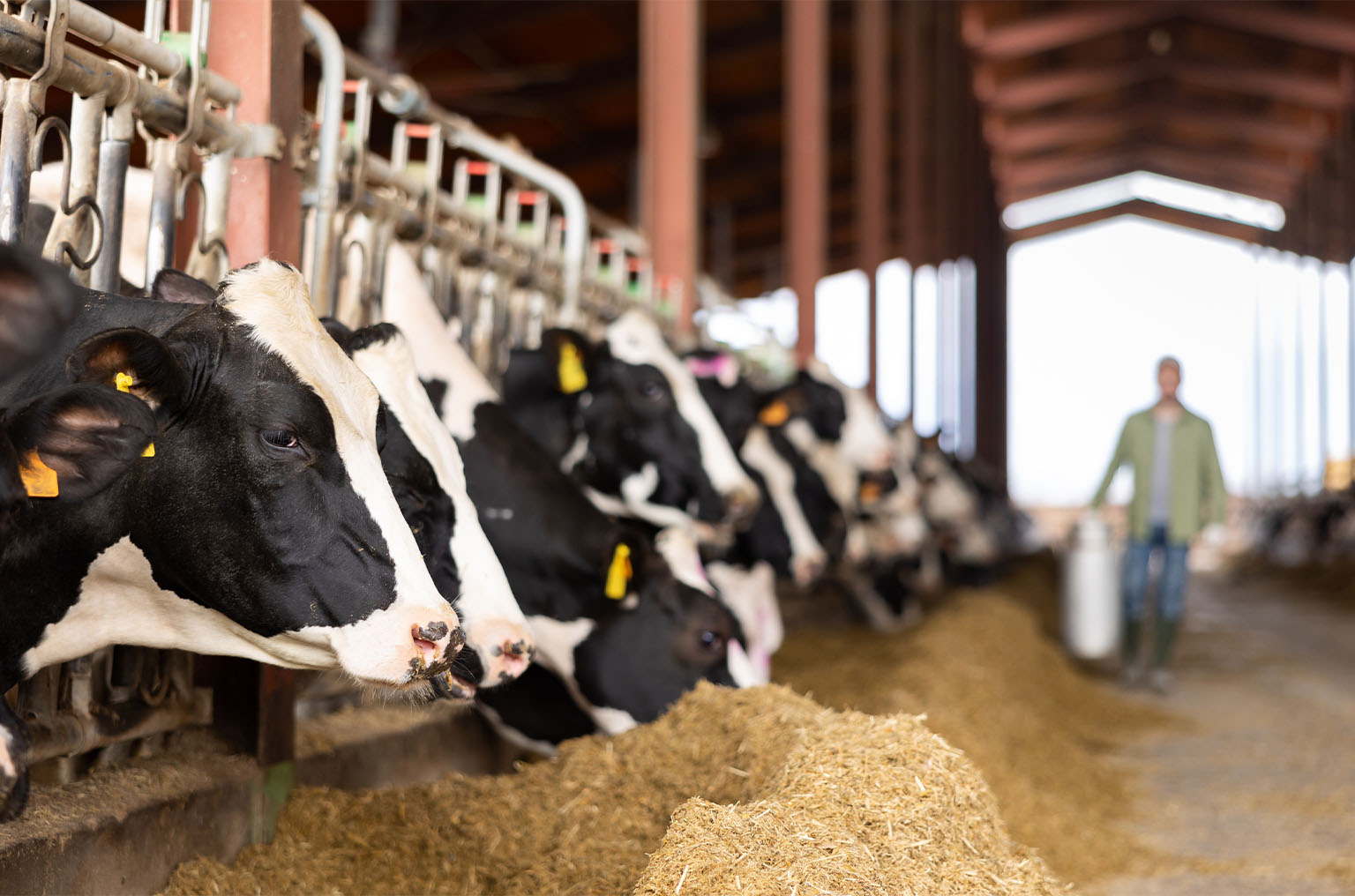How scary is H5N1 to a virologist raised on a Minnesota dairy farm?
“If bird flu evolves to preferentially replicate in humans, we have no immunity whatsoever,” says READDI Co-founder and Scientific Adviser Dr. Mark Heise.

By READDI, July 1, 2024 — Raised on a Minnesota dairy farm, virologist Mark Heise learned early on about the dangers of infectious pathogens. Decades ago, a bacteriological disease — brucellosis — wiped out his grandfather’s herd of dairy cows.
“It was financially devastating for the family,” said the READDI co-founder and scientific adviser, a professor in the UNC School of Medicine. “It shaped the trajectory of the farm, both for my grandfather and for my dad, who took over operations. It really put Dad behind the eight ball early on.”
Heise said his family’s plight has been top of mind as the H5N1 bird flu spreads among dairy herds. “An outbreak like this happens, and it’s life-changing for people. We saw this with COVID at a scale that’s hard for people to wrap their heads around.”
Heise researches how viral and host genetic factors interact to influence virus-induced disease. In addition to mosquito-borne alphaviruses, Heise studies the respiratory viruses influenza A and SARS-CoV-2, using a combination of molecular virology, viral immunology and systems genetics approaches.
Heise sat down with READDI staff to answer questions about H5N1, its potential threat to humans and the need for antivirals to mitigate the threat.
COVID, with a 1% case fatality rate, was devastating. What if we have a 10% or 15% case fatality rate associated with a highly infectious flu virus?”

H5N1 first emerged in 1996 in Asia. What changed to allow it to infect mammals? What needs to change for it to become pathogenic in humans?
Multiple factors affect viral transmissibility. Some have to do with receptors. H5 flu prefers receptor interactions with bird cells. Birds also have higher body temperatures than mammals. Part of what’s so concerning is that the virus is now replicating and spreading in dairy herds. That means the virus is making evolutionary jumps that are facilitating its ability to spread more effectively mammal-to-mammal.
To jump to humans, the virus would have to adapt to preferentially replicate in humans and do so at 37° Celsius [98.6° F] — and even lower temperatures, because our upper airway is even cooler than our core body temperature.
What worries you about H5N1?
What makes flu so effective is its segmented genome. If there’s a co-infection of two different viruses in a susceptible host — like bird flu and human flu in a dairy worker — flu can rearrange its genome to produce different surface proteins, or antigens. Humans have antibodies that target the antigens in seasonal flu strains. If H5N1 evolves to preferentially replicate in humans, we will have no immunity whatsoever. That kind of antigenic shift event drove the 1918 pandemic [which killed more than 30 million people worldwide]. We’re essentially tinder for a wildfire in that situation.
COVID, with a 1% case fatality rate, was devastating. What if we have a 10% or 15% case fatality rate associated with a highly infectious flu virus?
How about the impact to agriculture?
Even if the worst-case scenario doesn’t play out, there’s still a risk to people working with the animals. They and their families are at the frontlines of this. These rural farm workers are dependent on these jobs. Anything that jeopardizes their health makes their lives more precarious.
And then there’s the health of the animals. We should be concerned about our milk and meat supply.
Are there antiviral drugs for treating H5N1?
There are antivirals against flu. There’s oseltamivir, also known as Tamiflu. All the data I have seen to this point suggest it is effective against H5 viruses.
The drawbacks are that it has a relatively short window when it’s effective — about 48 hours after the onset of symptoms — and there are concerns about resistance. And if the virus really did start to spread within the community, do we have enough drug for large-scale outbreaks? We need to have additional antivirals in our back pocket.
There are also vaccines. But even if they’re highly effective, that’s still a multi-month window before we could have them rolled out. Some people don’t mount good vaccine responses. Others are resistant to vaccination, which we saw during the last pandemic. We want to have stopgaps in hand, and antivirals would be a key part of that ability to respond.
Is READDI, with its global network of collaborators, working on antivirals for treating influenza?
We originally stayed away from influenza, mainly from a focus standpoint, since we felt like there were a lot of groups working on influenza. But it turns out that’s mainly vaccine work. Now is an important time to direct some of the antiviral drug development resources and expertise that we’ve put together toward influenza. We’re having those discussions.
What would a more effective antiviral look like?
READDI has an expansive view of different ways to make small-molecule inhibitors. We would target key replication processes that are very hard for the virus to evolve resistance to. These might be parts of the RNA synthetic machinery, especially conserved domains that ideally have breadth across all the known influenza viruses.
So, we would strive for breadth, plus low cost and a long window of treatment.
The world wasn’t prepared in 2020 when COVID-19 hit. That drove us to launch READDI. For me personally, I felt like we needed to do better next time. I’m concerned we’re set up for a repeat of where we were in 2020. It will be incredibly disappointing to me if we aren’t in a better position to respond in the case of a bird flu pandemic.
